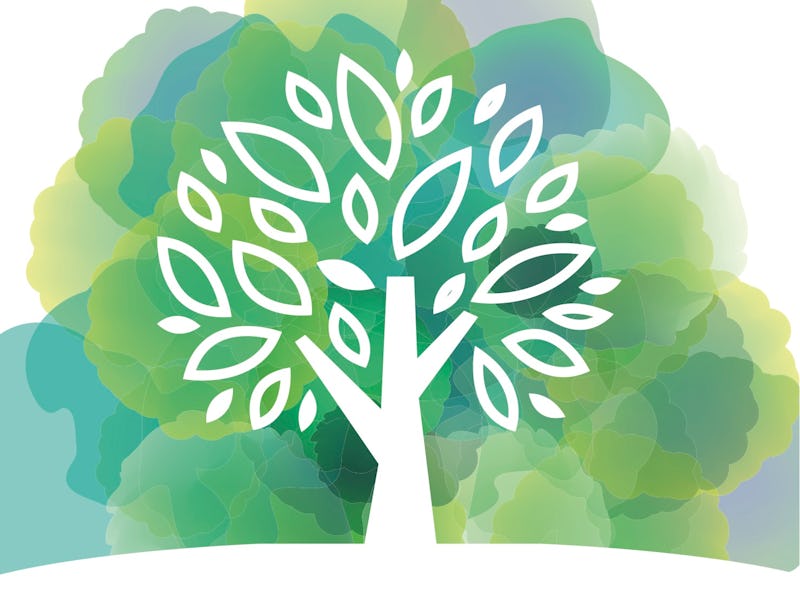Can planting a trillion trees really help Earth? It's complicated
Scientists explore where it makes most sense to plant carbon-sequestering trees to fight climate change.

The idea was floated by scientists and President Donald Trump's government alike: Planting an astronomical amount of trees — a trillion, some estimates suggest — may help pull us out of the deep trouble carbon dioxide emissions are causing.
The prevailing consensus among researchers is that planting trees can make strides toward lowering emissions. Trees sequester carbon dioxide, so having more of them does help to soak up the planet-warming gas.
But when it comes to planting all those trees, where you plant them may matter as much as the planting itself.
It turns out the key is planting trees in existing forests that aren't as tree-filled as they could be, researchers argue in a study published Monday in the journal Proceedings of the National Academy of Sciences.
By thickening up forests that are currently under-stocked with trees, humans could increase their carbon sequestering capacity by 20 percent, the study finds.
To arrive at that estimate, researchers looked at data for 130,000 forests in the United States. That covers nearly 1.4 million trees in US forests mitigating carbon pollution.
The researchers compared future possibilities with current estimates: Right now, forests can offset around 14 percent of carbon dioxide emissions every year.
But events like wildfires have wiped out many of the carbon-storing trees on those plots of land. By restoring forests and allowing them to re-grow, the carbon intake could also increase. Fully restocking all of the under-stocked forests in the country, the researchers find, could increase uptake of carbon by around 20 percent, eliminating more than 187 metric tons of carbon dioxide each year.
Jack pine trees regenerating following a wildfire.
Planting plans — Planting trees as part of the fight against climate change isn't a new strategy, but the study offers new insight on how best to go about it.
In 2019, a study in the journal Science proposed that planting more than a trillion trees would ultimately capture about two-thirds of the carbon emissions humans produce. The authors, from the university ETH Zurich, said restoring trees is "among the most effective strategies for climate change mitigation."
President Trump took to the idea. In early 2020, he expressed support during the World Economic Forum meeting in Davos, Switzerland. Trump expressed wanting to show "strong leadership in restoring, growing and better managing our trees and our forests," the WEF reported.
The US president included the trillion trees plan in his State of the Union address in February, too. But rather than point to the underlying science of the trillion trees — to directly combat global warming — he referred to it as a means to "protect the environment."
Whether the US or other members of the WEF actually plant such an extreme number of trees remains to be seen. But time is of the essence; the authors of this trillion-tree study say their research highlights "the opportunity of climate change mitigation through global tree restoration but also the urgent need for action."
With the new study, there is better understanding of where some of that urgent action should be concentrated to do the most work toward capturing carbon. But the study authors acknowledge that "there are challenges and opportunities to be considered with tree planting."
The new research helps by giving "context and estimates from the United States to inform assessments of the potential contributions of forests in climate change mitigation associated with tree planting," the study authors write.
Abstract: Several initiatives have been proposed to mitigate forest loss and climate change through tree planting as well as maintaining and restoring forest ecosystems. These initiatives have both inspired and been inspired by global assessments of tree and forest attributes and their contributions to offset carbon dioxide (CO2) emissions. Here we use data from more than 130,000 national forest inventory plots to describe the contribution of nearly 1.4 trillion trees on forestland in the conterminous United States to mitigate CO2 emissions and the potential to enhance carbon sequestration capacity on productive forestland. Forests and harvested wood products uptake the equivalent of more than 14% of economy-wide CO2 emissions in the United States annually, and there is potential to increase carbon sequestration capacity by ∼20% (−187.7 million metric tons [MMT] CO2 ±9.1 MMT CO2) per year by fully stocking all understocked productive forestland. However, there are challenges and opportunities to be considered with tree planting. We provide context and estimates from the United States to inform assessments of the potential contributions of forests in climate change mitigation associated with tree planting.